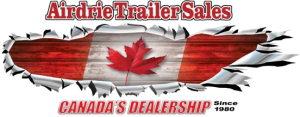Hitches and Balls
Hi there Trailer lovers!
Today we'll talk about all the little but big things you need to know when hooking up your trailer. Yep! you guessed it- Hitches and Balls.
Here's some important information every trailer owner should know.
There are five different classes of conventional hitches, able to tow different levels of weight:
- Class 1: Up to 2,000 pounds
- Class 2: Up to 3,500 pounds
- Class 3: Up to 8,000 pounds
- Class 4: Up to 10,000 pounds
- Class 5: Up to 12,000 pounds
Most cars and crossovers come with Class 1, 2 or 3 hitches, while larger trucks and SUVs can be equipped with Class 3, 4 or 5 hitches. Each conventional hitch has a different sized receiver tube. This is where the ball and ball mount go.
- Class 1 and 2: 1.25-inch receiver tube
- Class 3: 2-inch receiver tube
- Class 4 and 5: 2- or 2.5-inch receiver tubes, depending on configuration
The important thing is making sure your trailer sits level, front to back, and ball mounts can be purchased that lower or raise the ball as needed.
Ball sizes are determined by the weight of the trailer. Many manufacturers label the ball size right on the coupler. Common ball sizes are 1 7/8, 2, or 2 5/16 inches. Always use a ball with a weight capacity that exceeds that of your loaded trailer.
Should you need to tow more than 12,000 pounds, you'll likely need a heavy-duty truck with a gooseneck or fifth-wheel hitch. The hitch and ball are placed in the bed of the pickup truck, just over or in front of the rear axle.
- Gooseneck: This uses a ball-type setup and can handle up to 30,000 pounds.
- Fifth wheel: This uses a horseshoe-shaped mount -- think of it as a smaller version of what's found on a semi truck -- and can generally handle up to 25,000 pounds.
Want to learn more about hooking up your trailer? Our seasoned trailer technicians and Parts department are here for you.
